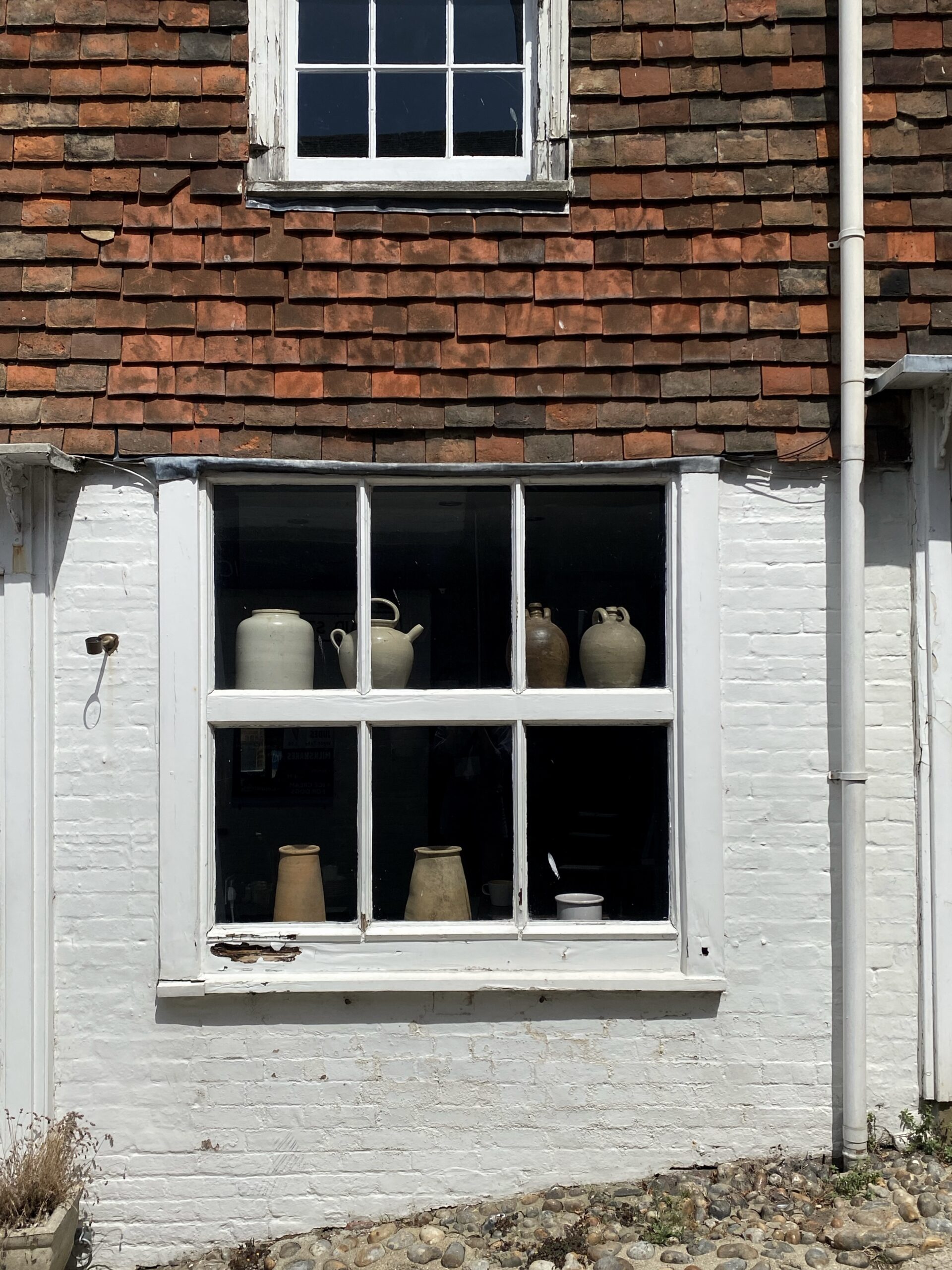Are you a proud owner of a snake plant but unsure about the ideal pot to house it in? Look no further! In this article, we will explore the topic of finding the best pot for your snake plant. Whether you are a newbie plant parent or a seasoned green thumb, choosing the right pot for your snake plant is crucial for its overall health and growth. Stay tuned to discover the various factors to consider when selecting a pot, such as drainage, size, material, and aesthetics, that will ensure your snake plant thrives in its new home.
Importance of Choosing the Right Pot for Snake Plant
When it comes to growing a healthy and thriving snake plant, choosing the right pot is crucial. The pot you select can have a significant impact on the overall well-being of your plant, from ensuring proper drainage and promoting healthy root growth to providing sufficient space for growth and enhancing its aesthetic appeal.
Ensuring Proper Drainage
One of the key factors to consider when choosing a pot for your snake plant is ensuring proper drainage. Snake plants, like most houseplants, require well-draining soil to prevent waterlogging and root rot. Without adequate drainage, the excess water can pool at the bottom of the pot, leading to soggy soil and potentially damaging the plant’s roots.
A pot with drainage holes is essential as it allows excess water to escape, preventing waterlogged soil and promoting better oxygen circulation to the roots. This ensures that your snake plant receives the right amount of water, keeping it healthy and preventing root rot.
Promoting Healthy Root Growth
The right pot can also promote healthy root growth in your snake plant. Snake plants have sturdy and robust root systems that require sufficient space to spread and grow. Choosing a pot that is too small can restrict the roots and hinder their growth, leading to stunted or unhealthy plants.
On the other hand, selecting a pot that is too large can result in excess soil moisture, which can again lead to root rot. It is important to strike a balance by selecting a pot that provides just enough space for the plant’s roots to grow comfortably without drowning in excess water.
Providing Sufficient Space for Growth
Snake plants are known for their ability to grow tall and wide, with some varieties reaching several feet in height. As such, it is crucial to choose a pot that can accommodate their growth. Selecting a small pot may restrict the plant’s growth potential and lead to a crowded and unhealthy appearance.
Opting for a larger pot, however, should be done with caution. While it may provide more space for the plant to grow, it can also lead to overwatering if the pot is too deep or the plant is not watered appropriately. Therefore, it is important to consider both the diameter and depth of the pot to provide your snake plant with sufficient space for growth without sacrificing its overall health.
Enhancing Aesthetic Appeal
In addition to the practical considerations, choosing the right pot for your snake plant can also enhance its aesthetic appeal. A well-selected pot can complement your plant’s unique beauty and become an attractive addition to your indoor decor.
By selecting a pot that complements the style and color scheme of your room, you can create a harmonious and visually pleasing display. Whether you prefer a sleek and modern ceramic pot or a rustic terracotta container, the right choice can elevate the overall look of your snake plant and the space it inhabits.

This image is property of images.pexels.com.
Factors to Consider When Choosing a Pot for Snake Plant
When selecting a pot for your snake plant, there are several factors to consider. Each aspect plays a role in ensuring the plant’s health and well-being. By carefully evaluating these factors, you can make an informed decision and provide the best environment for your snake plant to thrive.
1. Material
The material of the pot is an essential consideration when choosing the right container for your snake plant. Different materials offer varying benefits and drawbacks, so it is important to select one that suits your specific needs and preferences.
Terra Cotta
Terra cotta pots are a popular choice among plant enthusiasts for several reasons. They are made from porous clay that allows for proper airflow and water evaporation, helping to prevent overwatering and root rot. The porous nature of terra cotta also helps to regulate moisture levels within the soil, promoting healthier root growth.
Additionally, terra cotta pots are sturdy and durable, which ensures they can withstand the weight of a mature snake plant. These pots also have a natural and rustic look that can add a touch of charm to any room.
Ceramic
Ceramic pots are another excellent choice for snake plants. They come in a wide range of colors, shapes, and sizes, allowing you to find the perfect match for your plant and interior decor. Ceramic pots are known for their durability and ability to retain moisture, which can be beneficial for snake plants in dry environments or for those who tend to forget to water their plants regularly.
However, it is important to note that ceramic pots are generally not as breathable as terra cotta pots. This means that they may retain more moisture, which could lead to overwatering if not careful. It is essential to ensure proper drainage and monitor watering habits when using ceramic pots.
Plastic
Plastic pots are a practical and affordable option for snake plants. They are lightweight, making them easy to move and rearrange. Plastic pots also come in various sizes and colors, offering versatility and options to suit your preferences.
However, plastic pots may not be as sturdy or durable as other materials. Over time, they can degrade in quality and become brittle, leading to potential cracking or breakage. Additionally, plastic pots are less breathable than materials like terra cotta or ceramic, which may impact soil moisture and air circulation.
Metal
Metal pots, such as stainless steel or aluminum, can add a contemporary and sleek touch to your snake plant’s display. They are durable and can withstand heavy plants without the risk of breakage. Metal pots are also excellent at retaining moisture, reducing the frequency of watering.
However, it is important to note that metal pots can heat up quickly in direct sunlight, potentially harming the roots of your snake plant. They may also be prone to rusting over time if not properly cared for. Consider the environment and lighting conditions in your space before choosing a metal pot for your snake plant.
Glass
Glass pots, while less common, can create a stunning and unique display for your snake plants. They allow for maximum visibility of the plant’s roots, providing an interesting visual element. Glass pots also make it easier to monitor the moisture level in the soil and spot any potential issues with the roots.
However, glass pots are fragile and can break easily if mishandled or dropped. They may also require more frequent watering due to their lack of moisture retention compared to other materials. Consider the level of care and attention you are willing to give to your snake plant when deciding on a glass pot.
2. Size
Choosing the right size pot is paramount for the health and growth of your snake plant. The size of the pot will determine how much space the plant’s roots have to grow and how well it can access essential nutrients and water. When considering the size of the pot, there are two main aspects to keep in mind: diameter and depth.
Choosing the Right Diameter
When selecting the diameter of the pot, it is generally recommended to choose a pot that is about 1-2 inches wider than the current size of your snake plant’s root ball. This extra space allows the roots to expand and grow without becoming overcrowded. Providing ample room for the roots will encourage healthy growth and prevent the plant from becoming root-bound.
Considering Depth
The depth of the pot is also crucial to consider. Snake plants have relatively shallow root systems, so a pot that is too deep may lead to moisture buildup and root rot. Ideally, the pot should have a depth that allows for proper drainage while providing enough space for the roots to spread comfortably. A depth of 6-8 inches is usually sufficient for most snake plant varieties.
3. Drainage Holes
The presence of drainage holes is vital for the overall health of your snake plant. These holes allow excess water to escape the pot, preventing the roots from sitting in water and becoming waterlogged. Without proper drainage, the soil can become compacted, depriving the roots of oxygen and increasing the risk of root rot.
Importance of Drainage Holes
Drainage holes ensure that the excess water can flow out of the pot, preventing the soil from becoming waterlogged. This is especially critical for snake plants as they are susceptible to root rot, which can be caused by excessive moisture. By enabling proper drainage, you create an environment that closely mimics the plant’s natural habitat and promotes healthy root development.
Ensuring Proper Drainage
When choosing a pot, it is essential to opt for one with sufficient drainage holes. This will allow water to freely escape, preventing any buildup at the bottom of the pot. If you come across a beautiful pot without drainage holes that you cannot resist, it is possible to add drainage holes yourself. Simply drill or punch holes in the bottom of the pot to ensure proper water flow.
4. Weight
Considering the weight of the pot is important for both practical and aesthetic reasons. The weight of the pot can affect its portability and the overall stability of your snake plant. It is important to choose a pot that is manageable to lift and move, especially if you plan on rearranging your plants frequently.
Considering Portability
If you prefer the flexibility of rearranging your indoor plants or if you like to rotate your snake plant’s position to ensure even sunlight exposure, a lightweight pot may be more suitable. Plastic or lightweight ceramic pots are excellent options when portability is a priority, as they are easy to carry and maneuver.
On the other hand, if you have a designated spot for your snake plant or are confident in its current position, a heavier pot may be preferred. Heavier pots, such as those made from sturdy materials like terra cotta or metal, provide added stability and can prevent accidental tipping or toppling over.
Weight Distribution
In addition to the overall weight of the pot, it is also important to consider weight distribution. Ensure that the pot has a balanced weight distribution, evenly supporting the plant as it grows. A pot with uneven weight distribution may become unstable, leading to potential leaning or falling. This can cause damage to the plant and the pot itself.
5. Aesthetics
While the practical considerations such as material, size, drainage, and weight are important, the aesthetics of the pot should not be overlooked. The right pot can enhance the overall visual appeal of your snake plant, creating a cohesive and attractive display within your home or office.
Matching the Pot with Room Decor
Consider the existing decor and design aesthetic of the room in which your snake plant will reside. Choose a pot that complements the overall style, color scheme, and ambiance of the space. If your room features a minimalist or modern design, sleek ceramic or metal pots may be an excellent choice. If you prefer a more rustic or natural look, opt for a terracotta pot.
By selecting a pot that blends harmoniously with the room’s decor, you can create a visually pleasing and cohesive space that showcases your snake plant’s beauty.
Choosing a Color or Design
Pots come in various colors and designs, allowing you to personalize the look of your snake plant’s container. Some people prefer neutral and muted colors that provide a subtle backdrop for the plant, while others opt for bold and vibrant pots that make a statement in the room.
Consider your personal style and preferences when selecting the color and design of the pot. Choose something that not only complements your decor but also reflects your own taste and personality.

This image is property of images.pexels.com.
Best Pot Options for Snake Plant
Now that you have a comprehensive understanding of the factors to consider when choosing a pot for your snake plant, let’s explore some of the best pot options available on the market.
1. Terra Cotta Pots
Terra cotta pots have been trusted and loved by plant enthusiasts for their excellent drainage properties and natural aesthetic appeal. They are made from clay that allows for proper airflow, moisture regulation, and healthy root growth.
Advantages
- Excellent drainage properties
- Promotes healthy root growth
- Natural and rustic look
- Durable and long-lasting
Disadvantages
- Can be heavy
- Not as breathable as other materials
- Prone to cracking if mishandled
Recommended Brands
2. Ceramic Pots
Ceramic pots offer versatility in terms of color, shape, and design. They are durable and can retain moisture, making them suitable for environments where moisture regulation is important.
Advantages
- Wide range of colors and designs
- Durable and long-lasting
- Retains moisture well
- Easy to clean
Disadvantages
- Less breathable than terra cotta pots
- Can break if dropped
- May require careful monitoring of water levels
Recommended Brands
3. Plastic Pots
Plastic pots are lightweight and cost-effective options for snake plant owners. They come in various sizes and colors, offering flexibility and ease of use.
Advantages
- Lightweight and easy to move
- Affordable
- Wide range of sizes and colors
- Sturdy and durable
Disadvantages
- Less breathable than other materials
- Can degrade over time
- May not offer the same aesthetic appeal as other materials
Recommended Brands
4. Metal Pots
Metal pots, such as stainless steel or aluminum, provide a sleek and modern look to your snake plant display. They are durable and retain moisture well.
Advantages
- Modern and contemporary aesthetic
- Retains moisture
- Durable and sturdy
- Wide range of shapes and sizes
Disadvantages
- Can heat up quickly in direct sunlight
- Prone to rusting over time
- Limited variety compared to other materials
Recommended Brands
5. Glass Pots
Glass pots offer a unique and visually striking way to display your snake plants. They provide excellent visibility of the plant’s roots and allow for easy monitoring of moisture levels.
Advantages
- Unique and visually appealing
- Maximum visibility of roots
- Easy monitoring of moisture levels
- Can serve as a decorative element
Disadvantages
- Fragile and prone to breakage
- Requires more frequent watering
- Limited availability
Recommended Brands
Choosing the right pot for your snake plant is crucial for its overall health and growth. By considering factors such as material, size, drainage, weight, and aesthetics, you can create the optimal environment for your snake plant to thrive. Whether you opt for a terra cotta pot for its excellent drainage, a ceramic pot for its versatility, or a glass pot for its unique charm, remember to provide sufficient space and ensure proper care to enjoy the beauty of your snake plant for years to come.

